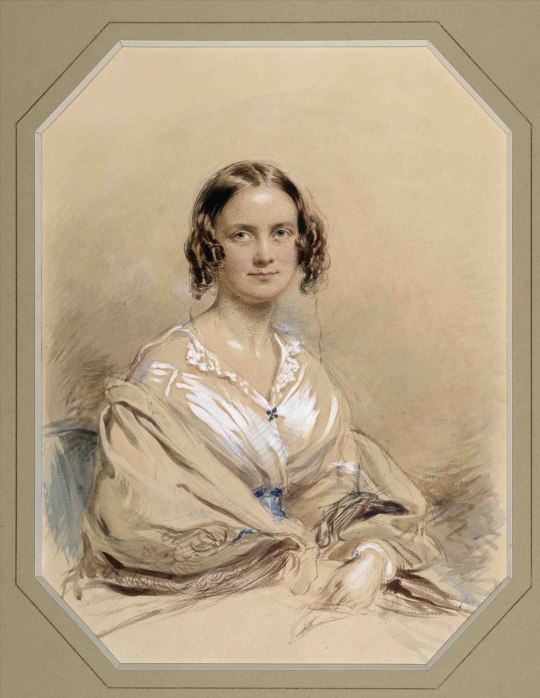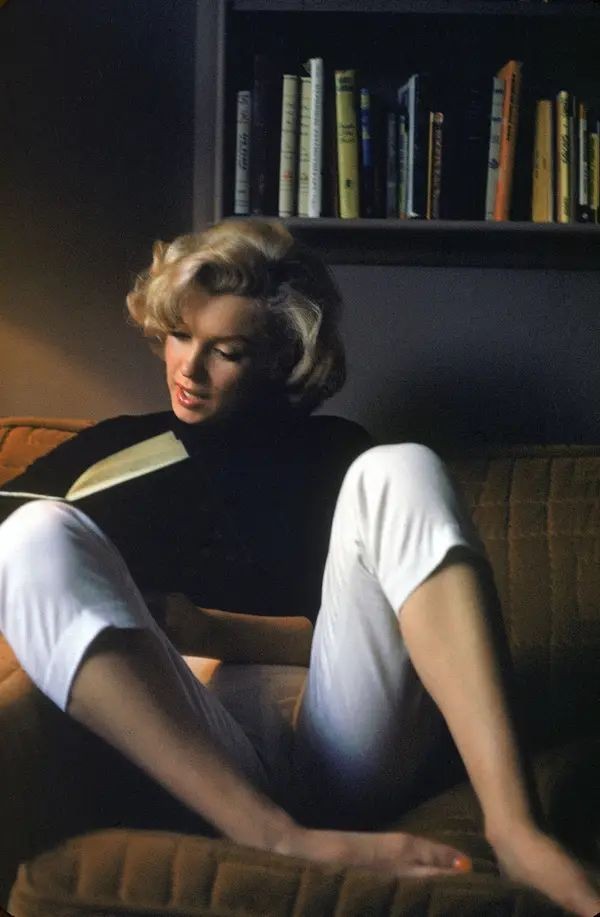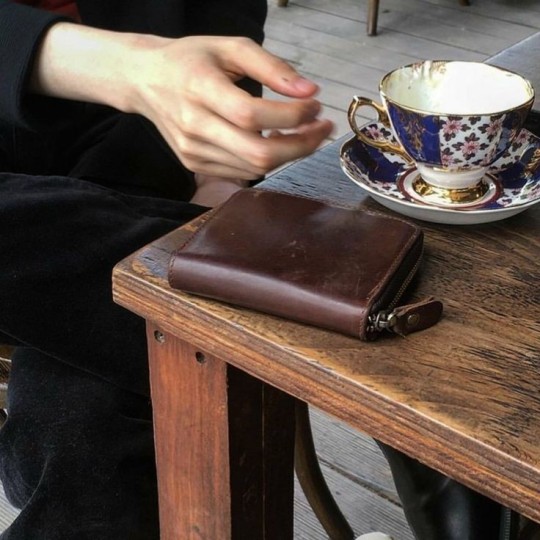#emma wedgwood
Text

source: bishopsbox
Emma Darwin (born Emma Wedgwood), Charles Darwin's wife. Watercolour by George Richmond, 1840.
Emma Darwin (nacida como Emma Wedgwood), esposa de Charles Darwin. Acuarela por George Richmond, 1840.
7 notes
·
View notes
Text











EMMA D'ARCY photographed by SOPHIE WEDGWOOD for MUSE MAGAZINE (September 2024)
#emma darcy#emma d'arcy#emmadarcyedit#house of the dragon#hotdcast#hotdcastedit#glamoroussource#flawlesscelebs#dailycelebs#userbecca#userhann#tusereliza#lgbtqedit#tusererika#ughmerlin#userzoya#creation#**#lost for wods...
356 notes
·
View notes
Text




hii, thank you darling @chantilliy for tagging me 🫶🏻
the first celebrity + outfit + quote + aesthetic pic that show up on your pinterest are your vibe
okay so.
1) this photo of marilyn monroe is really lovely and it definitely fits my vibe <3
2) i'd wear this outfit :-) i love plaid skirts. also how fun, i recently read emma!
3) okay i had to scroll down a lot to find this pic because i don't use pinterest for quotes. eventually i found these lyrics from "a case of you" by joni mitchell– i love this song <3
4) this was the first pic that showed up in my pinterest and!!!! i KNOW that tea cup!!!! it's a wedgwood fine china, from the royal albert set: 100 years of royal albert. there's 5 tea cups, each one inspired from a decade from 1900 to 1940 (then there's another set, the 1950-1990 one). this is the first one of the set... the beautiful regency blue <3 the gold! the pattern!! so elegant, definitely my favorite.
i am tagging @iidsch @winedark @kommunarde @bittersweetish @femmerald @mothprincess @heavenlyyshecomes @takethemonet-andletsgogh @intuitioned @sailermoon @marusyenka and anyone else who wants to do this <3 no pressure!
#i am at home sick and doing this gave me a brilliant idea: listening to my favorite joni mitchell's albums#she will cure my fever#diary
17 notes
·
View notes
Photo

Emma Darwin (née Wedgwood; 2 May 1808 – 2 October 1896) was an English woman who was the wife and first cousin of Charles Darwin. They were married on 29 January 1839 and were the parents of ten children, seven of whom survived to adulthood.
2 notes
·
View notes
Text
Reliquary Continued
Revival Chalice
1827/28
Designed by Augustus Welby Northmore
Pugin
(English, 1812-1852)
Made by Rundell, Bridge and Rundell
(English, 1797-1843)
London
Silver gilt incorporating eight spessarite
garnet cabochons
Gift of the Antiquarian Society, 2013.122
Puggin designed the chalice on the left- a more accurate interpretation of medieval examples-20
years later manufactured by John Hardman and company in base metal and engraved with the
word “model” on the underside, it likely served as a sample from which Hardman could solicit
further commissions, which would then have been executed in silver or silver gilt.
Anti-slavery Medallion
1787
Wedgwood Manufactory
(England, founded 1759)
Modeled by William Hackwood
(England, about 1753-1836)
Ethuria, Staffordshire
Solid white, jasper and black bessalt, cut
steel and ivory frame
Amelia Blanxius Memorial Collection, gift of Mrs. Emma B. Hodge and Mrs. Jene E. Bell,
1912.326
Josiah Wedgwood was one of number of prominent English men and woman dedicated to the
abolition of the slave trade. Wedgewood freely gave this medallion, inscribed AM I NOT A MAN
AND BROTHER?, to like-minded supporters; in 1788 he sent a number of them to Benjamin
Franklin in Philadelphia.
Bacchus and Two Fawns
About 1775
Wedgewood Manufactory (England, founded 1759)
Etruria, Staffordshire
Stoneware (jasperware)
The Frank W. Gunsaulus Collection of Old Wedgewood, 1912.166
Portland Vase
1790/96
Wedgewood Manufactory (England, founded 1759)
Etruria, Staffordshire
Stonewire (jasperware)
Gift of Rosalyn M. Rose, 1979.738
Mercury Joining the Hands of Britain and
France
1787/90
Wedgwood Manufactory (England, founded
1759)
Etrusia, Staffordshire
0 notes
Text
Weird Facts
Before marrying his cousin Emma Wedgwood, Charles Darwin carefully considered the pros and cons. The pros won out; they were married from 1839 until his death in 1882 and had ten children.
Source link
View On WordPress
0 notes
Text

1. Darwin was born on the same day as Abraham Lincoln.
Both Darwin and Lincoln were born on 12 February 1809 but in much different settings.
While America’s 16th president was born in a rude log cabin in the Kentucky wilderness, Darwin was born in a grand Georgian house on an estate overlooking the River Severn and the medieval market town of Shrewsbury, England.
2. He waited more than 20 years to publish his groundbreaking theory on evolution.
Darwin’s five-year voyage around the world on HMS Beagle, which ended in 1836, provided him with invaluable research that contributed to the development of his theory of evolution and natural selection.
Concerned, however, about the public and ecclesiastical acceptance of his deeply radical idea, he did not present his theory on evolution until 1858 when he made a joint announcement with British naturalist Alfred Russel Wallace, who was about to go public with a similar concept to Darwin’s.
The next year, Darwin published his seminal work, “The Origin of Species by Means of Natural Selection”.
3. Darwin suffered from chronic illnesses.
After returning from his trip around the world, Darwin began to suffer from exhaustion, eczema and chronic bouts of nausea, headaches and heart palpitations that would persist for the rest of his life.
Some speculate that during his travels, Darwin may have contracted a parasitic illness called Chagas disease that can eventually result in cardiac damage, which ultimately caused Darwin’s death.
4. He composed a pro/con list to decide on whether to marry.
Displaying a logical inclination even in matters of the heart, Darwin in 1838 composed a list with two columns delineating the upsides and downsides of marriage.
In the “Marry” column:
“children,” “constant companion (and friend in old age)…better than a dog anyhow” and “someone to take care of house.”
In the “Not Marry” ledger:
“freedom to go where one liked,” “conversation of clever men at clubs” and “loss of time.”
Not on Darwin’s list, however, were family ties for he married his first cousin Emma Wedgwood in 1839.
5. He dropped out of medical school.
Darwin’s father was a successful doctor who groomed his son to follow in his footsteps.
After spending the summer of 1825 serving as an apprentice in his father’s practice, he entered one of Britain’s top medical schools at the University of Edinburgh.
Darwin, however, hated the sight of blood and was bored with the lectures.
He left medical school and dashed his father’s dreams.
6. Darwin was a Divinity student.
After leaving the University of Edinburgh, the man who would challenge the established religious dogma of creationism enrolled at Cambridge to study Theology.
“I did not then in the least doubt the strict and literal truth of every word in the Bible,” he later wrote.
However, Darwin’s faith began to waver after encountering the evils of slavery on his trip around the world and following the deaths of three of his children.
Darwin, though, never characterized himself as an atheist.
He instead referred to himself as an agnostic.
7. He dined on exotic animals.
Darwin not only studied an eclectic menagerie of animals from around the globe, he ate them as well.
As a student at Cambridge, he formed the Gourmet Club, also known as the Glutton Club, for the purpose of dining on “birds and beasts, which were before unknown to human palate.”
Darwin ate hawk and bittern but couldn’t choke down a brown owl that was served.
While circumnavigating the globe on HMS Beagle, Darwin continued his adventurous eating by snacking on armadillo, ostrich and puma (“remarkably like veal in its taste,” he described).
8. He didn’t coin the phrase “survival of the fittest.”
Although associated with Darwin’s theory of natural selection, the phrase “survival of the fittest” was actually first used by English philosopher Herbert Spencer in his 1864 “Principles of Biology” to connect his economic and sociological theories with Darwin’s biological concepts.
Darwin first adopted the phrase in his fifth edition of “The Origin of Species,” published in 1869, by writing of natural selection that “the expression often used by Mr. Herbert Spencer of the survival of the fittest is more accurate, and is sometimes equally convenient.”
9. Darwin is buried inside Westminster Abbey.
After Darwin passed away on 19 April 1882, his family began preparations to bury him in the village where he had spent the last 40 years of his life.
However, Darwin’s friends and colleagues began a lobbying campaign to give him the high honor of burial inside London’s Westminster Abbey.
After newspapers and the public joined the chorus, the Dean of Westminster gave his approval.
A week after his death, Darwin was laid to rest in England’s most revered church near fellow scientists John Herschel and Isaac Newton.
10. Darwin appeared on the 10-pound note for 18 years.
Beginning in 2000, a portrait of a bearded Darwin appeared on the back of the British 10-pound note along with an image of HMS Beagle, a magnifying lens and flora and fauna seen on his travels.
However, the Bank of England discontinued his £10 note in 2018.








----------
Charles Robert Darwin FRS FRGS FLS FZS (12 February 1809 – 19 April 1882) was an English naturalist, geologist and biologist, best known for his contributions to the science of evolution.
His proposition that all species of life have descended over time from common ancestors is now widely accepted and considered a foundational concept in science.
In a joint publication with Alfred Russel Wallace, he introduced his scientific theory that this branching pattern of evolution resulted from a process that he called natural selection, in which the struggle for existence has a similar effect to the artificial selection involved in selective breeding.
Darwin has been described as one of the most influential figures in human history, and he was honoured by burial in Westminster Abbey.
#Charles Darwin#HMS Beagle#Alfred Russel Wallace#The Origin of Species by Means of Natural Selection#Emma Wedgwood#Herbert Spencer#Principles of Biology
5 notes
·
View notes
Text
Friendly reminder that Charles Darwin married his cousin
thank you science class, very cool
#charles darwin#facts#science#science facts#emma wedgwood#history#i'm telling y'all#it's true#look it up#thanks i hate it#thank you kanye very cool#thank you very cool
2 notes
·
View notes
Photo

Before marrying his cousin Emma Wedgwood, Charles Darwin carefully considered the pros and cons. The pros won out; they were married from 1839 until his death in 1882 and had ten children.
108 notes
·
View notes
Text
Darwin & Lincoln
Born 209 years ago today.
Something I wrote about Darwin quite a while ago
https://soundcloud.com/matilda-t-zombiequeen/its-so-charles-emma
I guess I’d better get on my Lincoln/Mary Todd Lincoln writing.
1 note
·
View note
Photo










“When I came to Spode didn’t know what to expect
liked the look of this place, the workshop
artist’s touch everywhere
I wanted this experience” Justina.
The British Ceramics Biennial is this year sprawling across the Potteries Museum & Art Gallery, Airspace Gallery, Spode, and here at The Goods Yard, a long-derelict building which used to be a warehouse between the canal (first dug in 1777) and the railway (1849). It is in partnership with Staffordshire University which, though a Keele man myself, I acknowledge to be be second to none in its ceramics work.
Here I found (1) plates by Ho Lai in bone china, a style riffing off (we might now call it ‘approriating’ traditional Chinese porcelain, developed in Europe by Potteries man Josiah Wedgwood (after going to the Goods Yard I went to hear Tristram Hunt give a lecture on Wedgwood at the fine Emma Bridgewater factory, opened in 1985 in the teeth of scoffing from armchair experts who insisted it would never work, and have been proven wrong).
Ho Lai, who comes from Hong Kong, is now in exile after finding that her home is no better off than it was under British rule and has exchanged one empire for another.
On a related note (2) Alison Cooke on British history and prehistory, thinking of our forefathers and foremothers who crossed what was once a land bridge (’Doggerland’) between what is now Europe and what is now the European continent, and what our heirs will face given climate change and coastal erosion.
Next came (3) Abi Wills, working in terracotta and porcelain, using clay because it is ‘an alchemist’s material’ (one of the pioneers of European porcelain actually was an alchemist, Johann Friedrich Böttger, who obviously failed to turn base metals into gold but ending up helping in a work much more worthwhile than that during his tinkering!)
Gerald Mak (4), who like Ho Lai is a Hong Konger now in London, was inspired by his traditions and by the city of Jingdezhen, a city I’ve been facinated by since I heard about it at the museum years ago; like Stoke-on-Trent, it is an ancient ceramic city which is now home to modern factories. Unlike Mak I have not been there, but I can admire the art inspired by the city.
Cicely Peers (5) is using the new technique of 3D printing and the ancient craft of slip casting to push forward the boundaries of pottery. Nicole Waefler (6) does the same in a rococo style. You can actually see tiny ‘flaws’ from the printing process but this only adds to the art in my opinion (I do also have a house full of ‘seconds’ from factories in the city, a widely accepted practice here!)
Oriel Zinaburg (7), an architecht whose love of materials brought him into ceramic art, has a more abstract style, as part of the Fresh 2021 collaboration with Staffordshire University. This playfulness and seeing where the material takes one also lies behind Rosie Harman’s exploration (8); she developed from painting into a 3D artist.
Becky Houghton (9) likewise makes sculptures and ‘shrines’ from clay just for the sheer pleasure of playing with ‘mud’, which I discovered as a child in one of the many ‘marl holes’ where I live, simply wetting the clay and drying it out, though I have not then or now made a work of art like this.
Lastly (actually not lastly; there are many more shoots to come in this series, though this shoot is now at an end), Dorcas Casey (10) shows her interest in ‘dreams, stories, intuition and memory’ with a remarkable display based on leeches!
Justina and other have told their stories to Anjum Malik and they have been written on plates, to go alongside the works of art which are also speaking their truth.
I have lived here my whole life and had never heard of the Goods Yard until last month; I have also never been to Valentine Clays,where the exhibition also runs, but will do so this weekend.
The long-term future of the Goods Yard is still in some doubt so I would urge everyone to come to the exhibition while it’s still on (until 17 October 2021 and then it’s off for two years!) to show everyone what Justina and her friends already know, that art and industry, “use and ornament” are the twin turbos that will heal the wounds caused by the first deindustrialisation.
“sense of peaceful serene environment
just be free of all problems for a while
a healthy outlet for me”
12 notes
·
View notes
Photo

Lady Diana Beauclerk (24 March 1734 – 1 August 1808) was an English noblewoman and artist.
She was a highly gifted artist who was able to use her scandalous reputation as an adulteress, aristocratic woman to further her career as a painter and designer. She painted portraits, illustrated plays and books, provided designs for Wedgwood's innovative pottery, and decorated rooms with murals. Championed by her close friend Horace Walpole, whose letters illuminate all aspects of her life, she was able to establish herself as an admired artist at a time when women struggled to forge careers.
She illustrated a number of literary productions, including Horace Walpole's tragedy The Mysterious Mother, the English translation of Gottfried August Bürger's Leonora (1796) and The Fables of John Dryden (1797). After 1785 she was one of a circle of women, along with Emma Crewe and Elizabeth Templetown (1746/7-1823), whose designs for Josiah Wedgwood were made into bas-reliefs on jasper ornaments
33 notes
·
View notes
Note
Here’s an anon. But idk what to say 😳 how about a question: anything that’s been inspiring you in particular lately?
Sorry for the really late response to this, I only just saw it for some reason!
Ooooo recently I've been very into Wedgwood Jasperware pottery! I only just found out what it is this year but I think it's so gorgeous and I want to make a piece of art with similar vibes!
If I had to make an inspo map for things that have inspired me over the years:
-Manga/anime: The Rose of Versailles, Emma (by Kaoru Mori), FMA (mainly the manga but also the Brotherhood adaptation), Hunter x Hunter, JJBA, Ace Attorney (it's a game but yk 😭💗 i love it sm)
-General: Greek mythology (especially Euripides' Bacchae and Virgil's Aeneid), Gothic books (specifically Frankenstein, Dracula, TPODG and Carmilla), and history and historical fashion!
-and here's just a general list of my favourite online artists 💗 - >
@dyemelikeasunset - I've been a fan of their art for years and seeing the diversity and creativity in their work really inspired me as a baby artist. I especially adore their fantasy world Ocean of Cycles.
@pepurika please go and read their webcomic, Tiger Tiger, it's my favourite webcomic!! It's so good! It's an LGBT swashbuckling adventure and it’s sooo good 🥰
@agent-lapin Love her art and OCs, definitely check her out if you love pink! She marries pink, heartsy aesthetic with a gothic aesthetic super well!
@ouiouhie - Really gorgeous vibrant colouring style! I've mostly been following her on twitter and I've been enjoying her Ace Attorney and Hades fanart a lot! It's been inspiring me to try my hand at more fanart!
Petitepasserine on Twitter (idk if she uses her tumblr over here)! I love how soft her art is and her fashion choices for her characters, that blend historical fashion with fantasy designs, are always impeccable 🥰
@kyunmei - I've been a fan of his art ever since he did JJBA fanart! I love his use of colour and his art really got me into KnY in 2019-2020 🥰 I find his poster work really inspiring!
#Please feel free to rec artists or webcomics!#I want to read more webcomics since I'm an aspiring webcomic artist#Inspo#Anonymous#Ask#Text post
3 notes
·
View notes
Photo





Emma Darwin – Scientist of the Day
Emma Darwin, wife of Charles Darwin, was born May 2, 1808, about 9 months before her future husband.
(read more...)
#Emma Darwin#Charles Darwin#Wedgwood#Down House#histsci#19th century#history of science#Ashworth#Scientist of the Day
68 notes
·
View notes
Text
A Spark in Search of a Powderkeg
Rebellion is its own justification, completely independent of the chance it has to modify the state of affairs that gives rise to it. It’s a spark in the wind, but a spark in search of a powder keg.
André Breton
If only one thing has brought me joy in the last few weeks, it began when the matriarchs at Unist’ot’en burned the Canadian flag and declared reconciliation is dead. Like wildfire, it swept through the hearts of youth across the territories. Reconciliation was a distraction, a way for them to dangle a carrot in front of us and trick us into behaving. Do we not have a right to the land stolen from our ancestors? It’s time to shut everything the fuck down!
Tawinikay (aka Southern Wind Woman)
The toxic cargo carried in Canadian pipelines, whether it be tar sands oil or fracked liquid natural gas (LNG), is, according to all serious climate scientists, a major, perhaps even decisive contribution to global warming, i.e. ecological catastrophe. Meant to fuel industrial expansion, the pipelines have themselves become fuel for revolt. Designed to move these dirty fossil fuels from one location to another, they are a crucial element in normalizing the dubious paradise of unlimited growth in awe of which all obedient consumer/citizens are supposed to genuflect. In what the colonial mapmakers have called British Columbia (BC), resource extraction has always been the name of the game. However, the emergence in February of this year of a widespread oppositional network ranging from “land back” Indigenous warriors to elder traditionalists and from Extinction Rebellion activists to anarchist insurrectionaries was heartening. Railways, highways and ferries were blockaded, provincial legislatures, government administrative offices, banks and corporate headquarters were occupied. The catalyst for this rebellion was a widespread Indigenous uprising that refused the illusory promises of reconciliation. Together, these rebel forces disrupted business as usual in solidarity with the Unist’ot’en Big Frog clan of the Wet’suwet’en tribal house.
As objective chance would have it, the primary Indigenous land defense camp is situated not far from the same Hazelton, B.C. area to which surrealist Kurt Seligmann and his wife Arlette had journeyed in 1938. During that time, they visited Gitxsan and Wet’suwet’en villages, marveled at the imaginative power of the totem poles and ceremonial objects, made field notes, shot 16mm film, collected stories and recorded mythic histories. Now, in 2020, growing numbers of these same Indigenous peoples have been threatening to bring the Canadian economy to a grinding halt. Unwilling to be bought off by corporate petrodollars or mollified by a legal system that has never done anything but pacify, brutalize, or betray them in the process of stealing their land, Indigenous peoples passionately fought back against the forces of colonial law and order in a radical whirlwind of willful disobedience and social disruption. One action built upon another in creating a rolling momentum that seemed unstoppable. When one railroad blockade would be busted by the Royal Canadian Mounted Police (RCMP), another would spring up in its place elsewhere extending the frontlines of the battle all across the continent. Then the debilitating Covid-19 virus arrived to compound the damage that had previously been done to the capitalist economy by the incendiary virus of revolt. The resistance of these Indigenous communities against the pipelines concerns all of us, worldwide, since they are on the front lines of the struggle to prevent cataclysmic climate change.
In the future, a key question will be whether Canadian authorities can successfully put the genie of Indigenous rebellion back in the colonial bottle of “reconciliation”. As surrealists, we hope they will not, and we stand in solidarity with the unreconciled insurgent spirit of defiant Indigenous resistance. A new reality is to be invented and lived instead of the one that today as yesterday imposes its environmental miserabilism and its colonialist and racist hierarchies. As surrealists, we honor our historical affinity with the Kwakwaka’wakw Peace Dance headdress that for so long had occupied a place of reverence in André Breton’s study during his lifetime before being ceremoniously returned in 2003 to Alert Bay on Cormorant Island by his daughter, Aube Elléouet, in keeping with her father’s wishes. With this former correspondence in mind, we presently assert that our ongoing desire to manifest the emancipation of the human community as distinctively undertaken in the surrealist domain of intervention is in perfect harmony with the fight of the Indigenous communities of the Americas against globalized Western Civilisation and its ecocidal folly.
Surrealists in the United States: Gale Ahrens, Will Alexander, Andy Alper, Byron Baker, J.K. Bogartte, Eric Bragg, Thom Burns, Max Cafard, Casi Cline, Steven Cline, Jennifer Cohen, Laura Corsiglia, David Coulter, Jean-Jacques Dauben, Rikki Ducornet, Terri Engels, Barrett John Erickson, Alice Farley, Natalia Fernandez, Brandon Freels, Beth Garon, Paul Garon, Robert Green, Maurice Greenia, Brigitte Nicole Grice, Janice Hathaway, Dale Houstman, Karl Howeth, Joseph Jablonski, Timothy Robert Johnson, Robin D.G. Kelly, Paul McRandle, Irene Plazewska, Theresa Plese, Michael Stone-Richards, David Roediger, Penelope Rosemont, LaDonna Smith, Tamara Smith, Steve Smith, Abigail Susik, Sasha Vlad, Richard Waara, Joel Williams, Craig S. Wilson
Surrealists in the UK: Jay Blackwood, Paul Cowdell, Jill Fenton, Rachel Fijalkowski, Krzysztof Fijalkowski, Merl Fluin, Kathy Fox, Lorna Kirin, Rob Marsden, Douglas Park, Michel Remy, Wedgwood Steventon, Frank Wright, the Leeds Surrealist Group (Gareth Brown, Stephen J. Clark, Kenneth Cox, Luke Dominey, Amalia Higham, Bill Howe, Sarah Metcalf, Peter Overton, Jonathan Tarry, Martin Trippett), the London Surrealist Group (Stuart Inman, Philip Kane, Timothy B. Layden, Jane Sparkes, Darren Thomas) and the surrealists of Wales (Jean Bonnin, Neil Combs, David Greenslade, Jeremy Over, John Richardson, John Welson)
Surrealists in Paris: Ody Saban and The Surrealist Group of Paris (Elise Aru, Michèle Bachelet, Anny Bonnin, Massimo Borghese, Claude-Lucien Cauët, Taisiia Cherkasova, Sylwia Chrostowska, Hervé Delabarre, Alfredo Fernandes, Joël Gayraud, Régis Gayraud, Guy Girard, Michael Löwy, Pierre-André Sauvageot, Bertrand Schmitt, Sylvain Tanquerel, Virginia Tentindo, Michel Zimbacca)
Surrealists in Canada: Montréal (Jacques Desbiens, Peter Dube, Sabatini Lasiesta, Bernar Sancha), Toronto (Beatriz Hausner, Sherri Higgins), Québec City (David Nadeau), Victoria (Erik Volet), the Ottawa Surrealist Group (Jason Abdelhadi, Lake, Patrick Provonost) and the Inner Island Surrealist Group (as.matta, Jesse Gentes, Sheila Nopper, Ron Sakolsky)
The Surrealist Group of Madrid: Eugenio Castro, Andrés Devesa, Jesús Garcia Rodriguez, Vicente Gutiérrez Escudero, Lurdes Martinez, Noé Ortega, Antonio Ramirez, Jose Manuel Rojo, María Santana, Angel Zapata
Surrealists in Sweden: Johannes Bergmark, Erik Bohman, Kalle Eklund, Mattias Forshage, Riyota Kasamatsu, Michael Lundberg, Emma Lundenmark, Maja Lundgren, Kristoffer Noheden, Sebastian Osorio
Surrealists in Holland: Jan Bervoets, Elizé Bleys, Josse De Haan, Rik Lina, Hans Plomp, Pieter Schermer, Wijnand Steemers, Laurens Vancrevel, Her de Vries, Bastiaan Van der Velden
Surrealists in Brazil: Alex Januario, Mário Aldo Barnabé, Diego Cardoso, Elvio Fernandes, Beau Gomez, Rodrigo Qohen, Sergio Lima, Natan Schäfer, Renato Souza
Surrealists in Chile: Jaime Alfaro, Magdalena Benavente, Jorge Herrera F., Miguel Ángel Huerta, Ximena Olguín, Enrique de Santiago, Andrés Soto, Claudia Vila
The Middle East and North Africa Surrealist Group: Algeria (Onfwan Foud), Egypt (Yasser Abdelkawy, Mohsen El-Belasy, Ghadah Kamal), Iraq (Miechel Al Raie), Syria (Tahani Jalloul), and Palestine (Fakhry Ratrout)
Surrealists in Prague: Frantisek Dryje, Joe Grim Feinberg, Katerina Pinosova, Martin Stejskal, Jan Svankmajer
The Athens Surrealist Group (Elias Melios, Sotiris Liontos, Nikos Stabakis, Theoni Tambaki, Thomas Typaldos, Marianna Xanthopoulou)
Surrealists in Costa Rica: Gaetano Andreoni, Amirah Gazel, Miguel Lohlé, Denis Magarman, Alfonso Peña
Surrealists in Buenos Aires: Silvia Guiard, Luís Conde, Alejandro Michel
Surrealists in Australia: Anthony Redmond, Michael Vandelaar, Tim White
Surrealists in Portugal: Miguel de Carvalho, Luiz Morgadinho
Surrealists in Bucharest (Dan Stanciu), Mexico (Susana Wald), and the Canary Islands (Jose Miguel Perez Corales)
Postscript: During the process of gathering signatures for the above declaration, we were inspired to see its uncompromising stance against white supremacy and police repression reflected in the brightly sparkling flames of the Minneapolis uprising that lit a powder keg of pent-up rage and incited an earth-shaking eruption of spontaneous rebellion in the streets of America. It was only fitting that in solidarity with the uprising about police brutality kicked off by George Floyd’s execution/lynching at the hands of the police, anti-racism protestors in the United States would take direct action by beheading or bringing down statues of Christopher Columbus, genocidal symbol of the colonial expropriation of Native American lands. (Guy Girard, Michael Löwy, Penelope Rosemont, and Ron Sakolsky, June 18, 2020).
10 notes
·
View notes
Photo

Ruth Padel, a direct descendant of Charles Darwin, here considers his relationship with his beloved wife, Emma Wedgwood, who wrote of him, in 1938, “He is the most transparent man I ever saw and most affectionate. Every word expresses his real thought.” In a note to Charles, composed while she was pregnant and he was working on his Journal of Researches (to be known to the world as The Voyage of the Beagle), Emma reflects on their ongoing discussion of Christian faith and its plausibility alongside his scientific work. Though they were living under the same roof, Emma committed to paper her fears that her husband would not be saved, as Padel documents in the first poem below; as a bonus, we also include the short poem that follows it, telling us what became of that missive.
She Writes Him A Note About Salvation
‘When I talk to you face to face I cannot say
exactly what I wish.’ Her back aches all the time;
she never goes out. His friend’s wife has died
in childbirth. ‘You say you are uncertain
about Christian Revelation but your opinion
is still not formed.’ He ’s told her his discoveries:
she ’d love him to be right in everything. She ’s very afraid
he’s not. ‘Faith is beyond our comprehension,
not provable in the scientific way you like.
I believe you sincerely wish to learn the truth.
But there are dangers in giving up Revelation
and Christ’s offer of eternal life. And in the sin –
I know you will have patience with your own
dear wife – of ingratitude for His suffering,
casting off what has been done. For you,
for everyone. I do not wish an answer.
It is satisfaction for me just to write. My fear
is for the afterlife. I cannot say how happy
you make me in this one, nor how dearly I love you.
I thank you for all the affection, which makes
my happiness more and more each day.
But everything that concerns you concerns me.
I should be most unhappy if I thought
we would not belong to each other for eternity.’
More on this book and author:
Learn more about Darwin: A Life in Poems by Ruth Padel.
Browse other books by Ruth Padel.
Peruse other poems, audio recordings, and broadsides in the Knopf poem-a-day series
To share the poem-a-day experience with friends, pass along this link.
2 notes
·
View notes